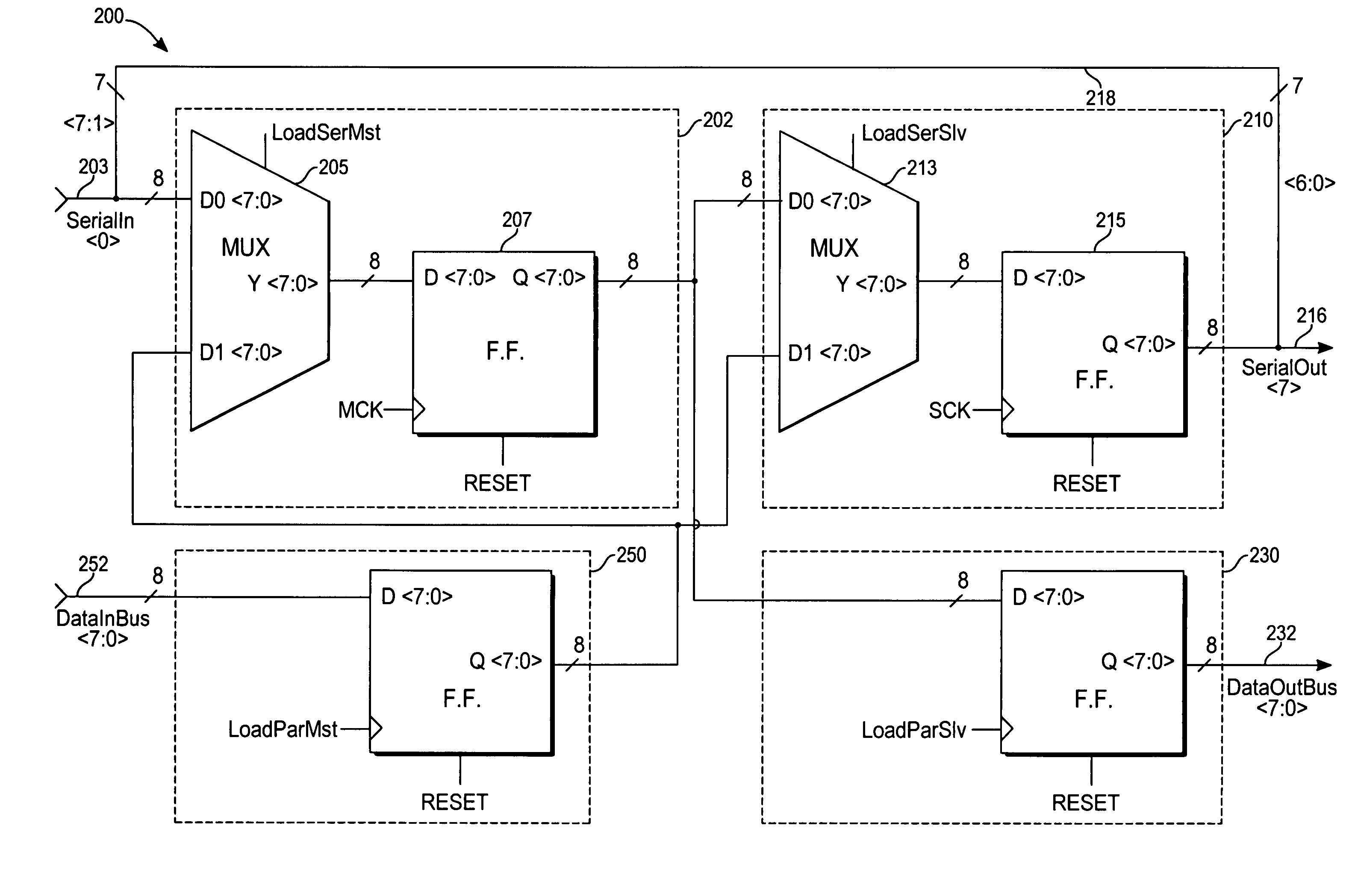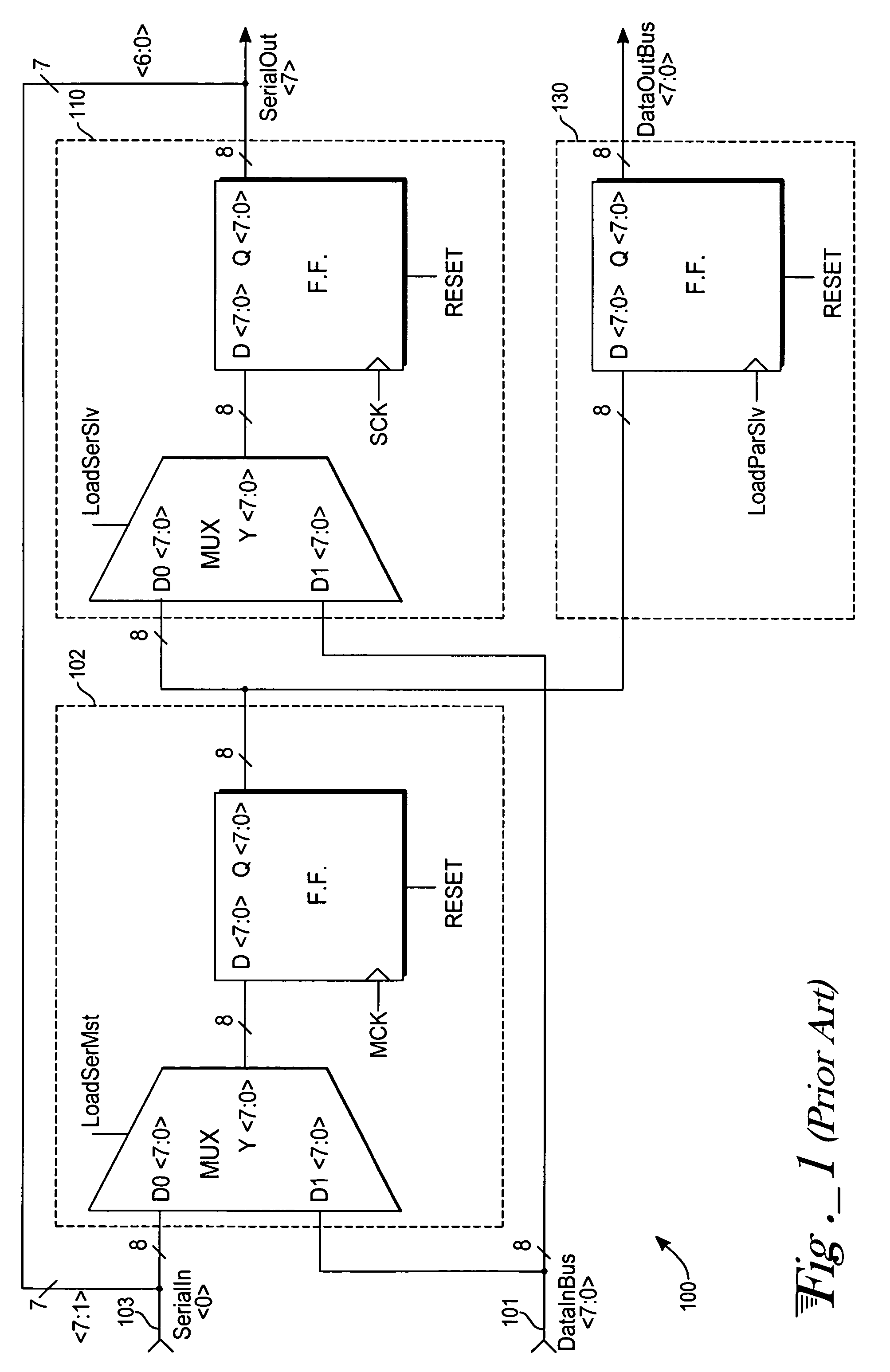Serial peripheral interface (SPI) apparatus with write buffer for improving data throughput
a peripheral interface and buffer technology, applied in the field of serial peripheral interfaces, can solve the problems of reducing the data throughput of the system, wasting time and sacrificing data throughput, and generating write collision errors, so as to improve data throughput, simplify the monitoring function of the software driver, and avoid stretching the master clock
- Summary
- Abstract
- Description
- Claims
- Application Information
AI Technical Summary
Benefits of technology
Problems solved by technology
Method used
Image
Examples
Embodiment Construction
[0018]With reference to FIG. 2A, an exemplary embodiment of the new enhanced mode SPI 200 block diagram contains a new register latch serving as a second parallel write buffer 250. Its purpose is to accept the content of input data on the parallel input data bus DataInBus 252 and store it while a previous data byte is still being transmitted. The enhanced SPI 200 comprises a serial master register 202, a serial slave register 210, a parallel slave register 230, and the second parallel write buffer 250.
[0019]The serial registers 202 and 210 are coupled together for transferring data serially through a serial output SerialOut 216. (Data can also be received serially through a serial input SerialIn 203 and converted by the serial registers into a parallel output for the bus DataOutBus 232.) The output of the master register 202 is coupled to the input of the slave register 210, while the output of the slave register 210 is coupled to both the serial output SerialOut 216 and a feedback ...
PUM
 Login to View More
Login to View More Abstract
Description
Claims
Application Information
 Login to View More
Login to View More - R&D
- Intellectual Property
- Life Sciences
- Materials
- Tech Scout
- Unparalleled Data Quality
- Higher Quality Content
- 60% Fewer Hallucinations
Browse by: Latest US Patents, China's latest patents, Technical Efficacy Thesaurus, Application Domain, Technology Topic, Popular Technical Reports.
© 2025 PatSnap. All rights reserved.Legal|Privacy policy|Modern Slavery Act Transparency Statement|Sitemap|About US| Contact US: help@patsnap.com



